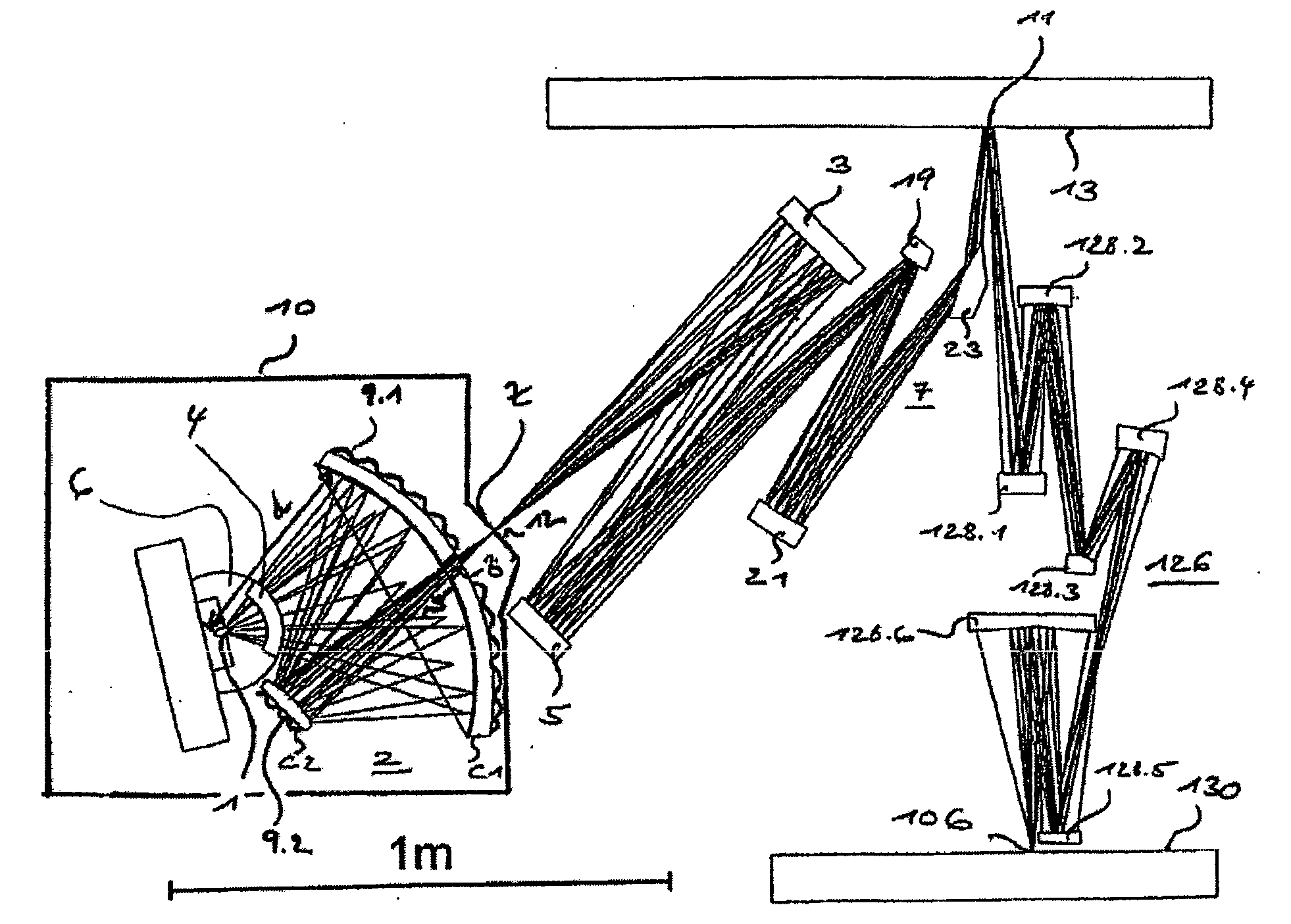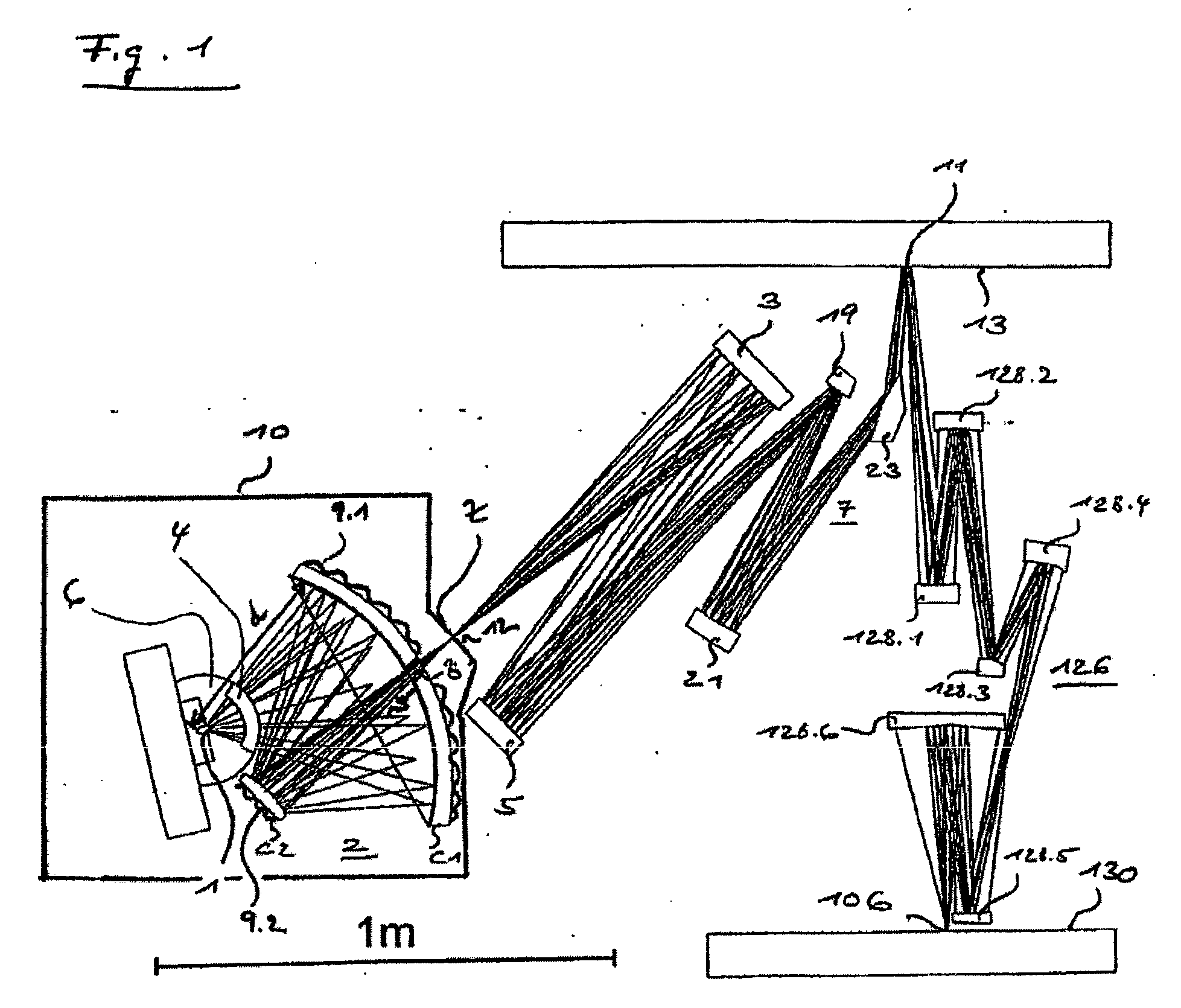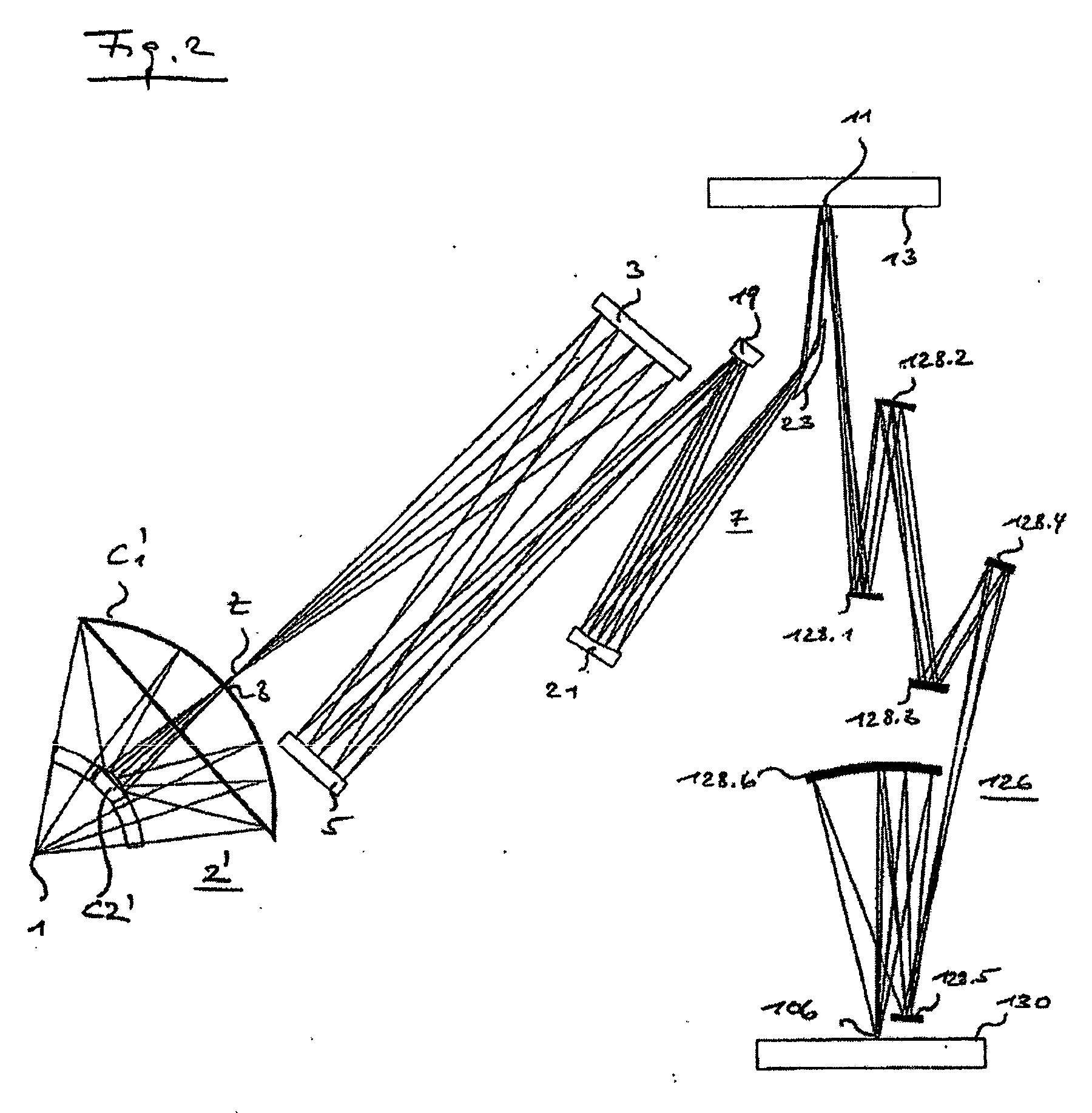Oblique mirror-type normal-incidence collector system for light sources, particularly euv plasma discharge sources
a collector system and mirror-type technology, applied in the field of mirror-type normal-incidence collector system, can solve the problems of grazing-incidence collectors' shadowing effects, inability to reduce the size of the illumination system, so as to achieve small radiation loss, large numerical aperture, and high collection aperture
- Summary
- Abstract
- Description
- Claims
- Application Information
AI Technical Summary
Benefits of technology
Problems solved by technology
Method used
Image
Examples
Embodiment Construction
[0021]FIG. 2 shows the typical structure of an EUV lithography system for microlithography, which comprises a Schwarzschild collector system 2′ corresponding to the prior art.
[0022] The schematically simplified representation of the Schwarzschild collector system 2′ shows a first normal-incidence collector mirror C1′, which takes up light from light source 1 by its concave, for example, parabolic or elliptical shape and bends it back, i.e., reflects it, onto the second normal-incidence collector mirror C2′, which in turn can be of hyperbolic or ellipsoid shape. This second normal-incidence collector mirror C2′ is thus disposed so that it is centered relative to the first normal-incidence collector mirror C1′, so that a symmetrical collector system is formed, which images the light source 1 onto a magnified intermediate image Z. A passage 8 is provided in the first normal-incidence collector mirror C1′ for the radiation exiting from the second normal-incidence collector mirror C2′. ...
PUM
| Property | Measurement | Unit |
|---|---|---|
| distance | aaaaa | aaaaa |
| wavelengths | aaaaa | aaaaa |
| width | aaaaa | aaaaa |
Abstract
Description
Claims
Application Information
 Login to View More
Login to View More - R&D
- Intellectual Property
- Life Sciences
- Materials
- Tech Scout
- Unparalleled Data Quality
- Higher Quality Content
- 60% Fewer Hallucinations
Browse by: Latest US Patents, China's latest patents, Technical Efficacy Thesaurus, Application Domain, Technology Topic, Popular Technical Reports.
© 2025 PatSnap. All rights reserved.Legal|Privacy policy|Modern Slavery Act Transparency Statement|Sitemap|About US| Contact US: help@patsnap.com



